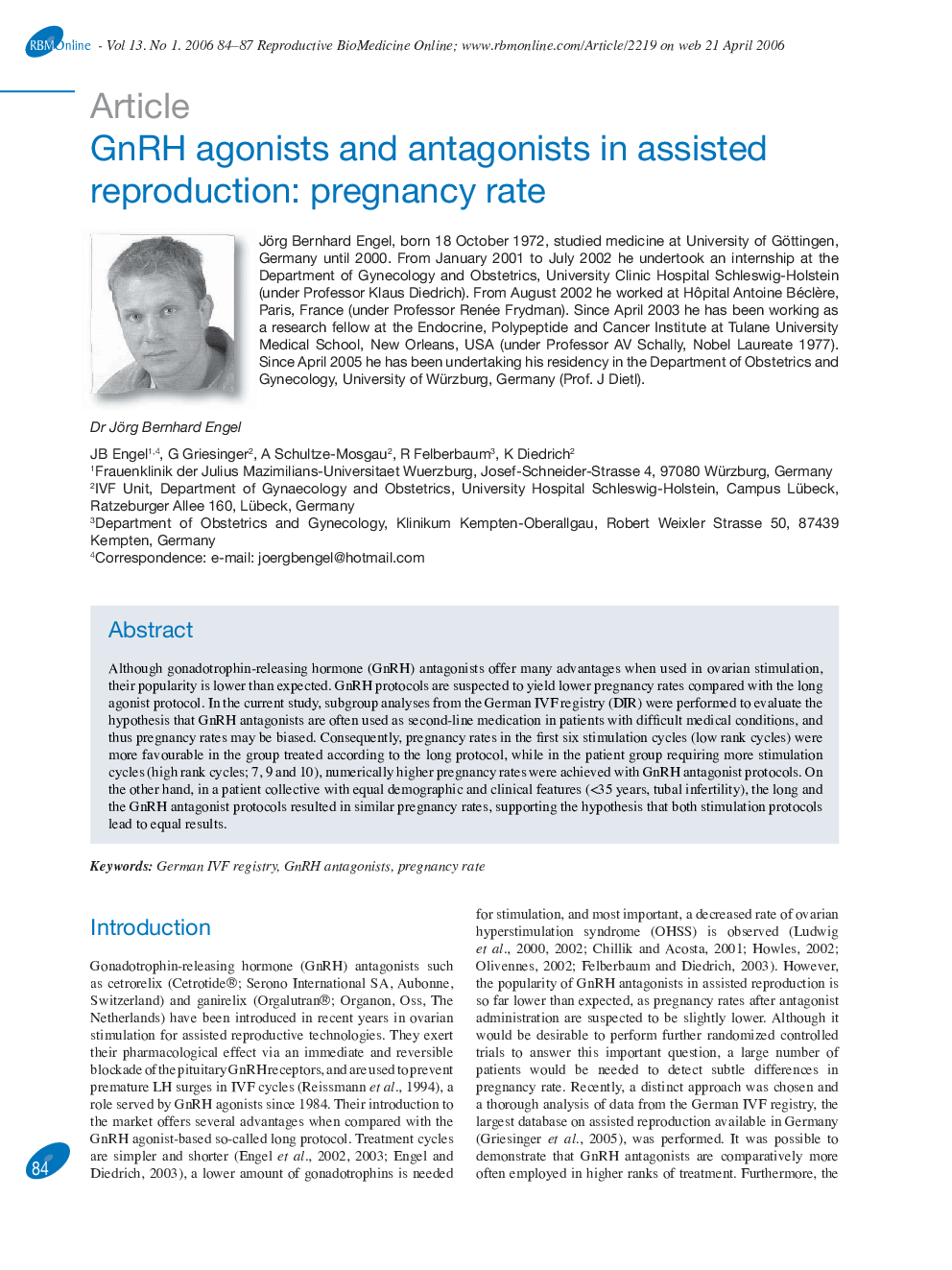| Article ID | Journal | Published Year | Pages | File Type |
|---|---|---|---|---|
| 3972924 | Reproductive BioMedicine Online | 2006 | 4 Pages |
Although gonadotrophin-releasing hormone (GnRH) antagonists offer many advantages when used in ovarian stimulation, their popularity is lower than expected. GnRH protocols are suspected to yield lower pregnancy rates compared with the long agonist protocol. In the current study, subgroup analyses from the German IVF registry (DIR) were performed to evaluate the hypothesis that GnRH antagonists are often used as second-line medication in patients with difficult medical conditions, and thus pregnancy rates may be biased. Consequently, pregnancy rates in the first six stimulation cycles (low rank cycles) were more favourable in the group treated according to the long protocol, while in the patient group requiring more stimulation cycles (high rank cycles; 7, 9 and 10), numerically higher pregnancy rates were achieved with GnRH antagonist protocols. On the other hand, in a patient collective with equal demographic and clinical features (<35 years, tubal infertility), the long and the GnRH antagonist protocols resulted in similar pregnancy rates, supporting the hypothesis that both stimulation protocols lead to equal results.
